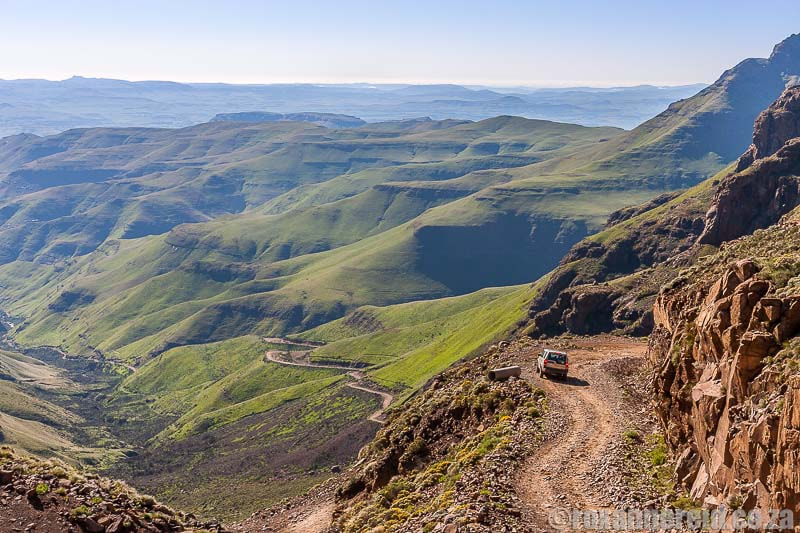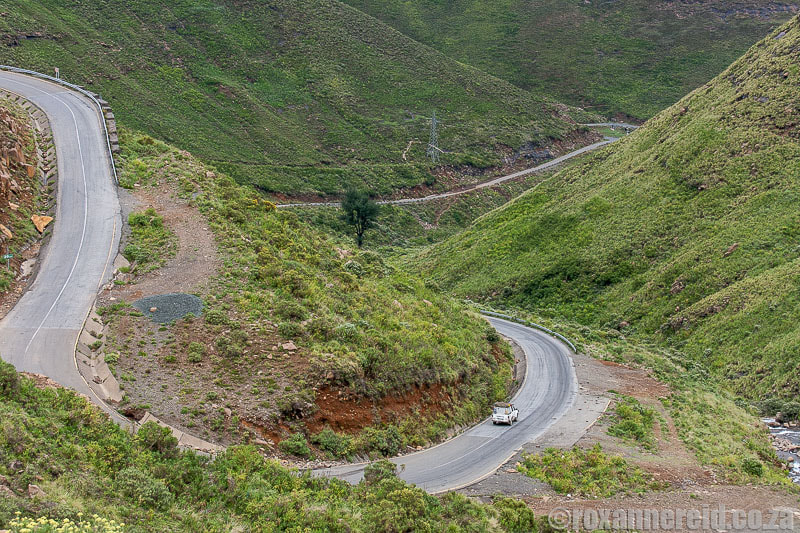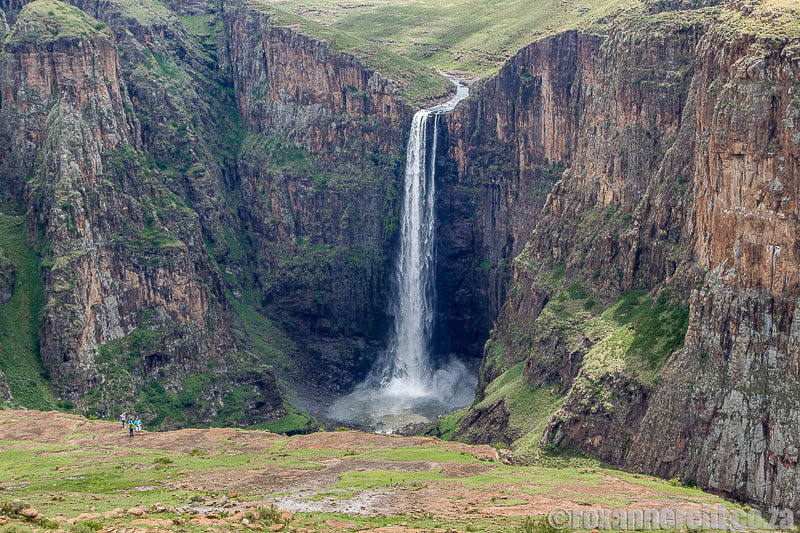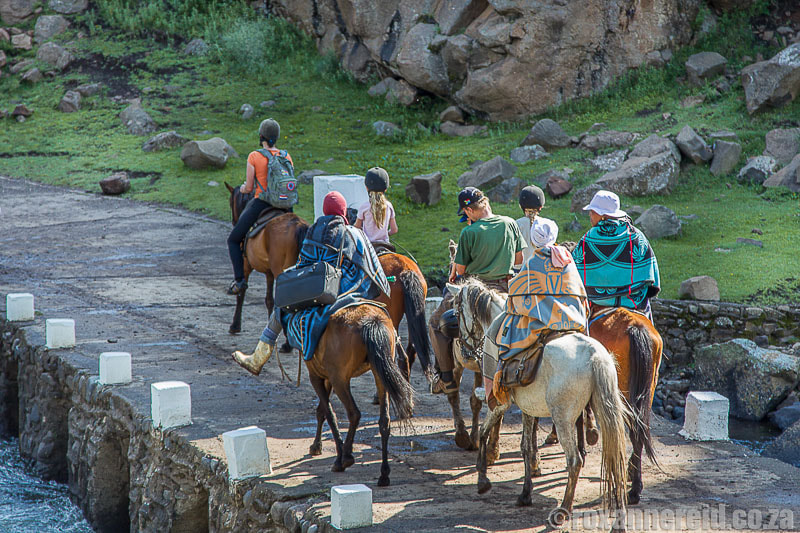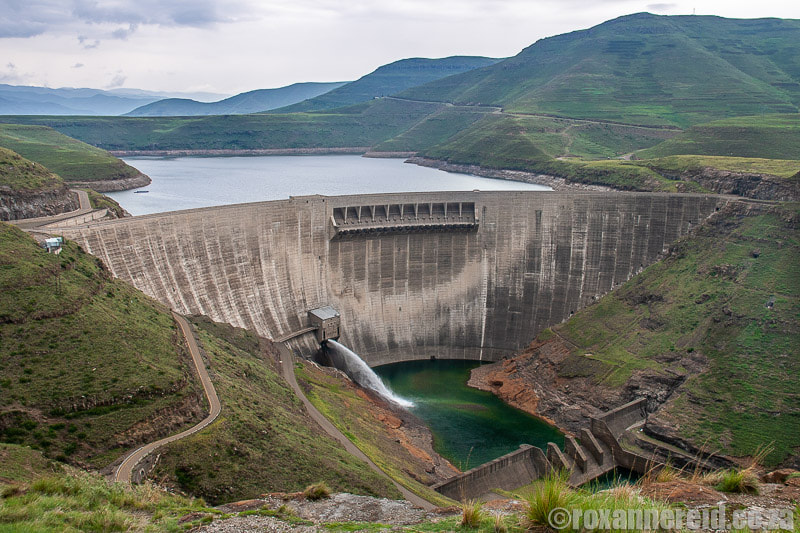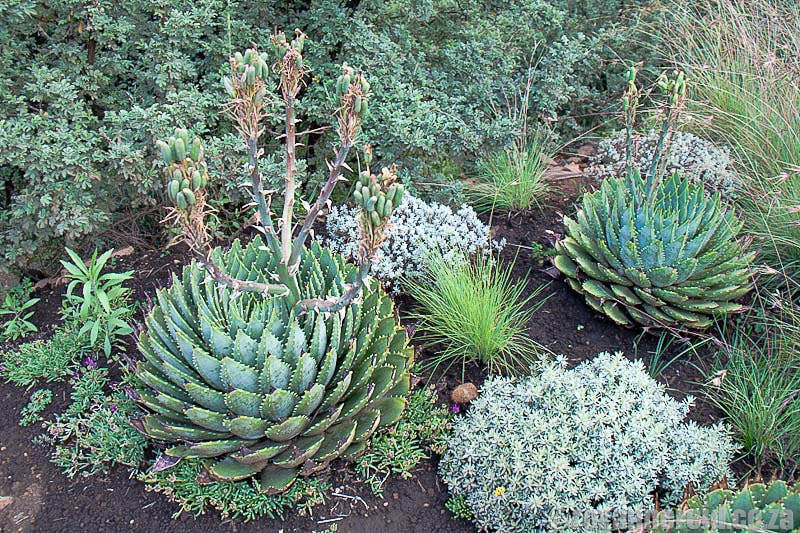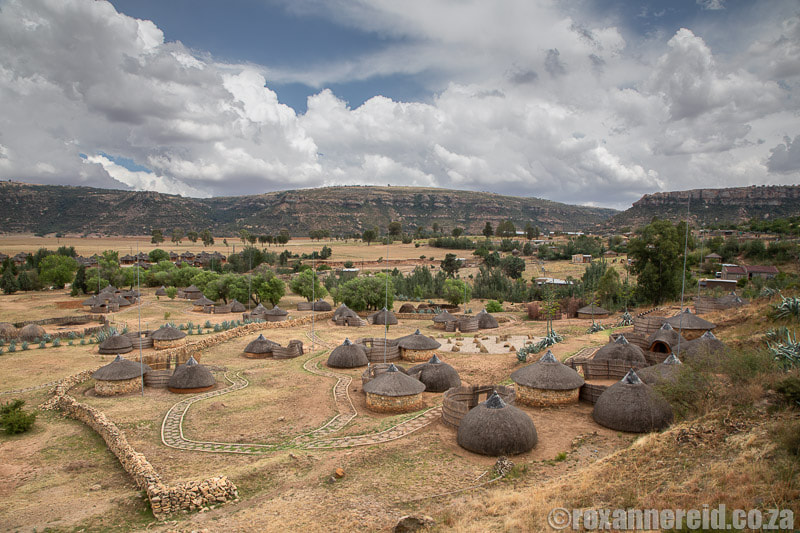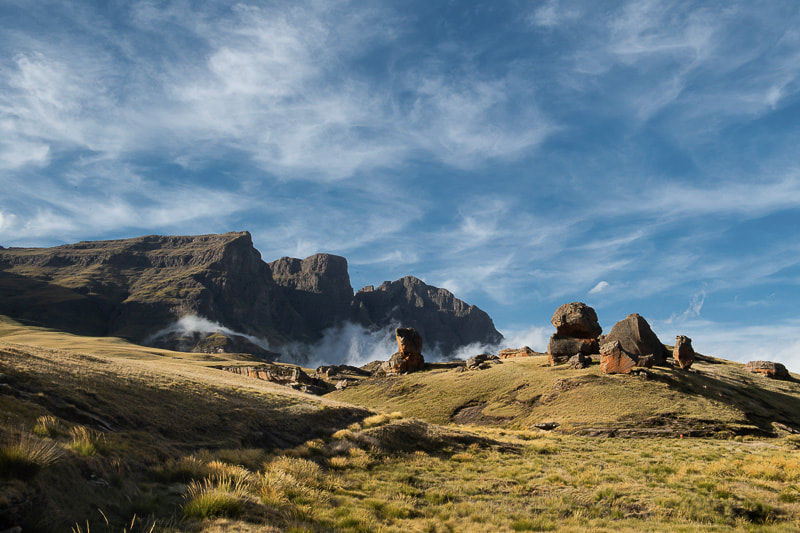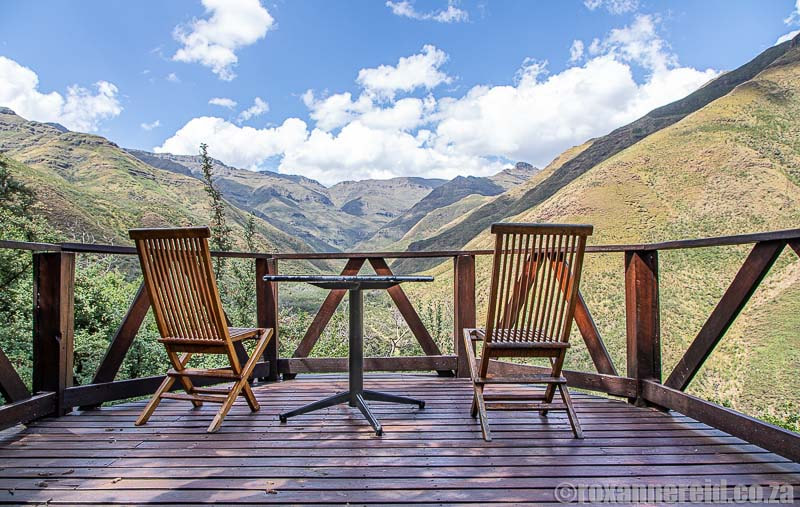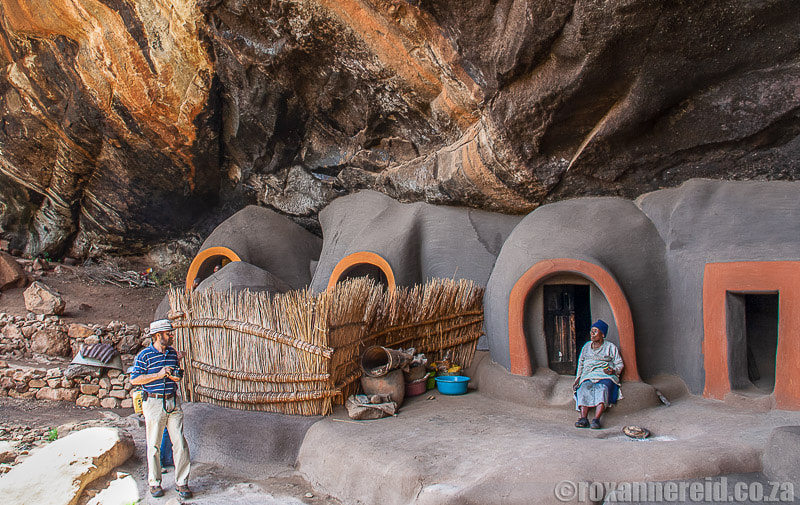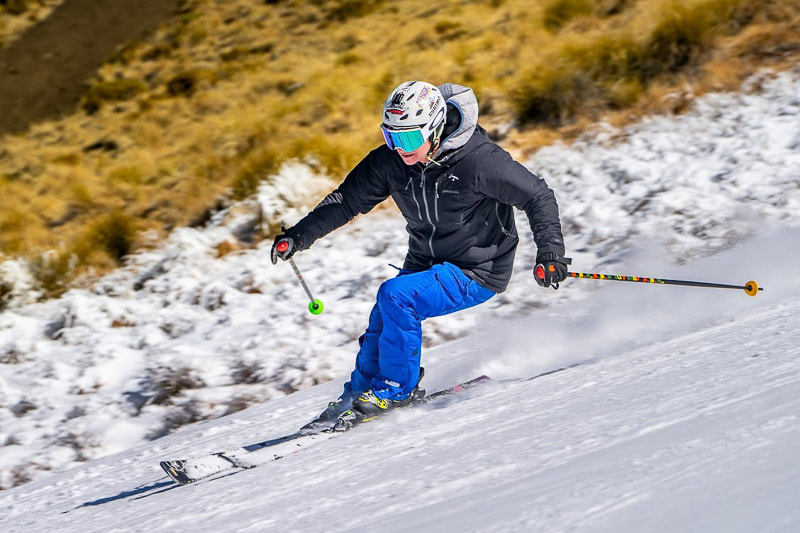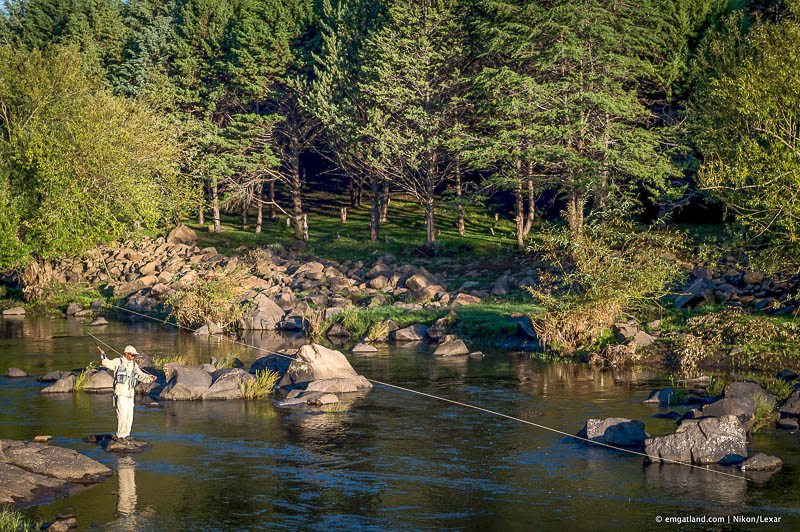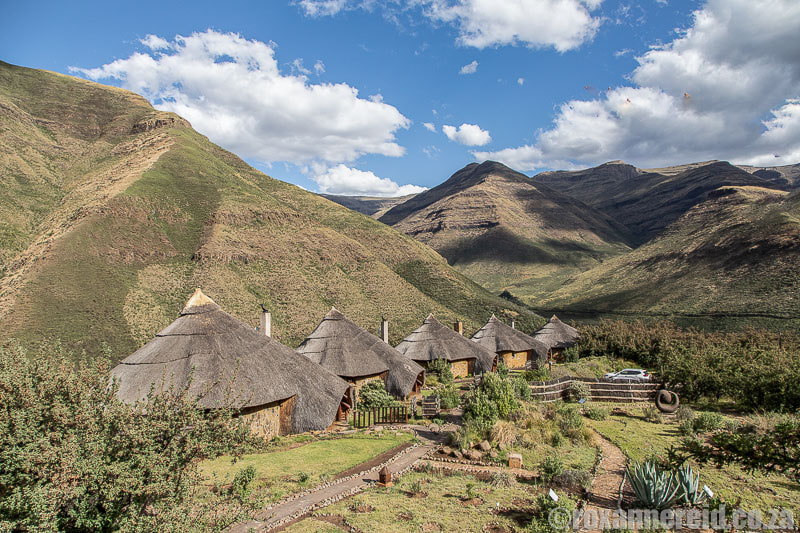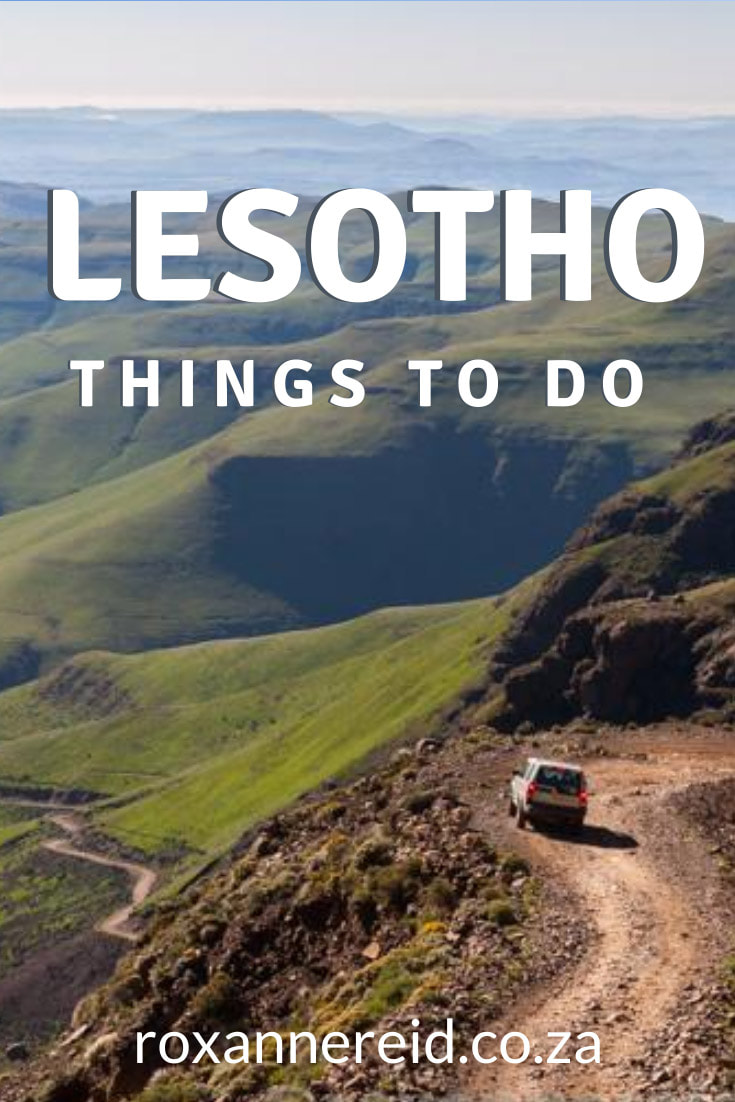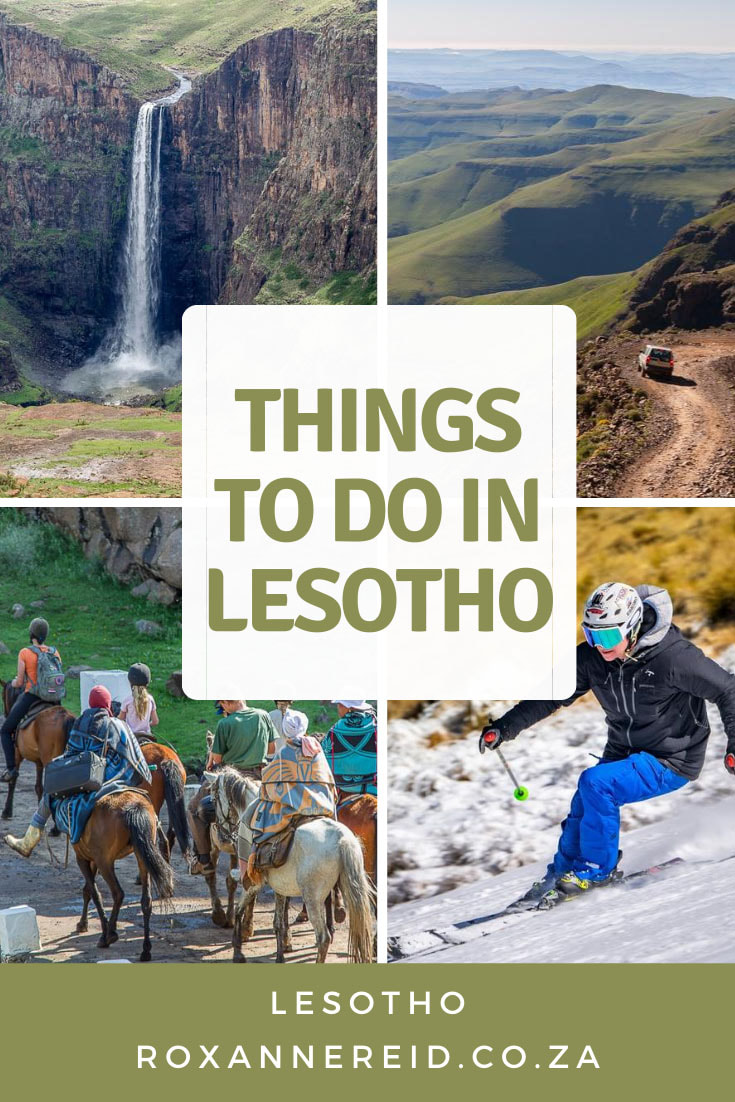
By Roxanne Reid
It’s a small landlocked country in Southern Africa. Yet for its size it packs quite a punch. There are sweeping mountainous landscapes, remarkable places to visit and lots of fun things to do in Lesotho.
It’s a small landlocked country in Southern Africa. Yet for its size it packs quite a punch. There are sweeping mountainous landscapes, remarkable places to visit and lots of fun things to do in Lesotho.
Some 80% of Lesotho lies above 1800m, with the highest point at 3482m, so it’s no wonder it’s known as the Mountain Kingdom. It’s a place of steep passes, clear streams and waterfalls, tiny rustic settlements of stone and thatch rondavels clinging to the mountainsides, and blanketed shepherds watching their flock.
It used to be a destination only for adventurers and explorers prepared to brave the bad gravel roads and take hours to do just a few kilometres. But today many of the poor roads have been upgraded or tarred, so travel times are much shorter than they used to be. You’ll need a 4x4 vehicle for Sani Pass and the Sehlabathebe National Park, but you can do all the other main routes on tar in a normal vehicle. Bear in mind, though, that the speed limit is 50km/h near the multitude of small settlements, so don’t underestimate your travel time.
There are so many Lesotho attractions and fun things to do in Lesotho that I’d recommend you don’t try to cover too much distance each day; rather leave time at points of interest to make the most of activities in the area. Here are some of my favourites.
1. Drive Sani Pass to the highest pub in Africa
It used to be a destination only for adventurers and explorers prepared to brave the bad gravel roads and take hours to do just a few kilometres. But today many of the poor roads have been upgraded or tarred, so travel times are much shorter than they used to be. You’ll need a 4x4 vehicle for Sani Pass and the Sehlabathebe National Park, but you can do all the other main routes on tar in a normal vehicle. Bear in mind, though, that the speed limit is 50km/h near the multitude of small settlements, so don’t underestimate your travel time.
There are so many Lesotho attractions and fun things to do in Lesotho that I’d recommend you don’t try to cover too much distance each day; rather leave time at points of interest to make the most of activities in the area. Here are some of my favourites.
1. Drive Sani Pass to the highest pub in Africa
Driving Sani Pass is possibly the biggest must-do for anyone lucky enough to own a 4x4 vehicle. (If you don’t have one, you can still travel the pass with one of several companies that operate from Underberg in KwaZulu-Natal, South Africa.) The gravel pass – at least for now – provides some awesome switchbacks and steep climbs in a country that specialises in steep passes. You’ll climb some 1500m in just 20km. It’s rough in places, with dongas and big stones that mean you may have to do part of it at a crawl. The switchbacks get tighter near the top and temperatures are significantly cooler there than at the bottom. (Seriously, I’ve been at Sani Top when it’s just 12 degrees Celsius in mid-summer.) The road may be slippery when wet and visibility is poor when there’s mist. Check with locals about conditions on the pass before you leave, especially in rain or snow. Stop at Sani Mountain Lodge at the top of the pass for a hot chocolate or a celebratory drink in the highest pub in Africa (2874m).
2. Drive some of Lesotho’s other winding passes
2. Drive some of Lesotho’s other winding passes
Given its name of the Mountain Kingdom, you won’t be surprised that there are nine spectacular mountain passes in Lesotho, with names like the Pass of Jackals, Gates of Paradise and God Help Me Pass. For me three of the most exciting are Sani Pass in the east (see point 1), Mafika Lisiu on the way to Katse, and Moteng between Butha Buthe and Oxbow. The tarred Mafika Lisiu climbs to 3090m in less than 30km and every bend will have you wanting to stop to marvel at the views. (If you hate heights and you’re a passenger, try to resist the impulse to keep your eyes closed!) There’s a pull-off viewpoint at the top for you to stop and take photos. Moteng Pass, also tarred, is on the way to Oxbow in the north. It has 91 bends, with a gradient in places of 1:5.
Read more about Lesotho’s passes
3. See dinosaur footprints
Lesotho may be a small country but it has an impressive number of giant dinosaur footprints. It even has a dinosaur named after it, the Lesothosaurus diagnosticus, a 2m-long omnivorous lizard that walked the mountains here some 200 million years ago. If your interests are palaeontological, you can find dinosaur footprints in areas like Quthing, Morija, Tsikoane near Leribe, and Liphofung (see point 9).
4. Abseil down Maletsunyane Falls
Read more about Lesotho’s passes
3. See dinosaur footprints
Lesotho may be a small country but it has an impressive number of giant dinosaur footprints. It even has a dinosaur named after it, the Lesothosaurus diagnosticus, a 2m-long omnivorous lizard that walked the mountains here some 200 million years ago. If your interests are palaeontological, you can find dinosaur footprints in areas like Quthing, Morija, Tsikoane near Leribe, and Liphofung (see point 9).
4. Abseil down Maletsunyane Falls
Maletsunyane Falls near Semonkong is one of the highest single-drop waterfalls in Africa and a must-see in Lesotho. There’s a steep path to the bottom, where you can swim in the pool in summer. If you want to squeeze the maximum from your Maletsunyane adventure, hire a pony to trek to the falls from Semonkong Lodge’s Activity Centre, then take on the 204m abseil from the top; according to the Guinness Books of World Records it’s the longest commercially operated single-drop abseil in the world. If you’re inexperienced, local community guides will give you some training on short cliffs the day before your abseil. You may get wet from the Maletsunyane spray on the way down, so wear quick-drying clothes or bring a change otherwise you’ll be hiking out of the gorge in uncomfortable sogginess.
5. Gets loads of action at Semonkong
5. Gets loads of action at Semonkong
Think of Semonkong as the adventure capital of Lesotho, the place to knock yourself out on everything from hiking and pony trekking to mountain biking, fly fishing and rock climbing. Hike into the mountains to enjoy the fresh air, plants and birdlife, or sign up for an overnight hike with a guide. Go on a mountain bike ride along gravel roads, horse trails and contour tracks. Saddle up a Basotho pony supplied by the local community to ride to Malentsunyane Falls (see point 4) or Mount Qoang to admire spiral aloes on the area’s highest mountain. Try fly fishing in the streams around Semonkong Lodge for brown and rainbow trout, or test your skill and endurance by rock climbing on sheer basalt cliffs that range from small up to 200m. You can even tackle a 4x4 drive in your own vehicle to places of interest.
Read more about Maletsunyane Falls and Semonkong
6. Go pony trekking
Lesotho’s mountainous terrain makes it an ideal place for pony trekking, or horse riding, which is the best way to get a sense of what a vital role the robust Basotho pony plays in local life. These hardy ponies are known for their sure-footedness and endurance even on steep mountain trails. Pony trekking is one of the best ways to explore the countryside and experience Lesotho’s mountains, streams and waterfalls. Both Ts’ehlanyane and Sehlabathebe national parks are perfect places for pony trekking, and there’s a 39km trail linking Ts’ehlanyane with the Bokong Nature Reserve. You can also find good pony trekking – both short outrides and multi-day overnight trails – at Malealea and Semonkong.
7. See Katse Dam
Read more about Maletsunyane Falls and Semonkong
6. Go pony trekking
Lesotho’s mountainous terrain makes it an ideal place for pony trekking, or horse riding, which is the best way to get a sense of what a vital role the robust Basotho pony plays in local life. These hardy ponies are known for their sure-footedness and endurance even on steep mountain trails. Pony trekking is one of the best ways to explore the countryside and experience Lesotho’s mountains, streams and waterfalls. Both Ts’ehlanyane and Sehlabathebe national parks are perfect places for pony trekking, and there’s a 39km trail linking Ts’ehlanyane with the Bokong Nature Reserve. You can also find good pony trekking – both short outrides and multi-day overnight trails – at Malealea and Semonkong.
7. See Katse Dam
Katse Dam is the mainstay of the massive Lesotho Highlands Water Project that supplies hydro-power to both Lesotho and South Africa. The 185m-high dam wall is one of only 30 double-curved concrete arch dam walls in the world; it curves from side to side as well as top to bottom. The dam’s base has a moveable joint that allows it to flex. Built over six years, the dam used 2.32 million cubic metres of concrete and has a capacity of almost 2 billion cubic metres of water. Join a tour at the visitor centre, which is the only way to get inside the dam wall to see some of the precision laser instruments that monitor the dam’s behaviour.
Read more about Katse Dam and visitor centre
8. Visit the Katse Botanical Garden
Read more about Katse Dam and visitor centre
8. Visit the Katse Botanical Garden
While you’re at Katse drop in at the Katse Botanical Garden, which was originally established to save Lesotho’s national flower, the spiral aloe (pictured), and other plants from being destroyed during construction of the dam. Today, half of the 17ha is landscaped and you can enjoy a rock garden, areas displaying mountain zone and high Afro-montane zone plants, as well as a medicine garden. It’s also the easiest place to see the fabulous spiral aloe. Take some time out on a bench overlooking the Katse dam.
9. Find San rock art
Lesotho is rich in the rock art of San/Bushmen hunter-gatherers, which you can find in the caves and rock overhangs that sheltered early man. At Ha Baroana east of Maseru you can see depictions of leopard, lion and eland. Another site is the Liphofung Cultural Centre in the Butha Buthe area. Liphofung means ‘place of the eland’ and the large Clarens sandstone overhang has a number of paintings of this big antelope on its walls. There’s a visitor centre with some information about the rock art and a craft centre. Tucked away in the Tsatsane Valley in the remote south-east of the country are four rock art sites, but you need to hike a couple of hours to see some of them. Depictions here include zebra, half-man half-animal figures, and the largest known painting of an eland (about 2m long and 1m high).
10. Visit Thaba Bosiu Cultural Village
9. Find San rock art
Lesotho is rich in the rock art of San/Bushmen hunter-gatherers, which you can find in the caves and rock overhangs that sheltered early man. At Ha Baroana east of Maseru you can see depictions of leopard, lion and eland. Another site is the Liphofung Cultural Centre in the Butha Buthe area. Liphofung means ‘place of the eland’ and the large Clarens sandstone overhang has a number of paintings of this big antelope on its walls. There’s a visitor centre with some information about the rock art and a craft centre. Tucked away in the Tsatsane Valley in the remote south-east of the country are four rock art sites, but you need to hike a couple of hours to see some of them. Depictions here include zebra, half-man half-animal figures, and the largest known painting of an eland (about 2m long and 1m high).
10. Visit Thaba Bosiu Cultural Village
Don’t miss a visit to Thaba Bosiu 24km from Lesotho’s capital, Maseru. This is where Moshoeshoe established his mountaintop fortress in 1824 to keep his people safe during the wars of the Difaqane. It’s considered the birthplace of the Basotho nation and one of the most important historical and cultural sites in the country; it’s even on UNESCO’s tentative World Heritage list. See the monument to Moshoeshoe, visit a traditional village, duck into the museum to learn the fascinating history of the Basotho people. Don’t miss the section on Basotho blankets. Hike to the top of the mountain where Moshoeshoe’s fortress remained unconquered and where the royal graves are. You can also arrange to see rock art. A little further down the road you can see Qiloane koppie, said to have inspired the shape of the conical Basotho hat with the little knobble on top.
Read more about Thaba Bosiu Cultural Village
11. Go hiking
Lesotho has fresh mountain air and a multitude of trails to be hiked. Enjoy mountain peaks, valleys with streams and waterfalls, look around to spot birds and keep an eye out for some of the Alpine-type plant species that grow at high altitudes. You’ll find some super hikes in Ts’ehlanyane and Sehlabathebe national parks, Bokong Nature Reserve and around Semonkong. Two musts are the short hike to the top of Thaba Bosiu, where Moshoeshoe built his fortress (see point 10), and from Sani Top (see point 1) to the summit of Thabana Ntlenyana. At 3482m, this is the highest point in Africa south of Kilimanjaro and it will take a full day to do a round-trip hike.
12. Visit Sehlabathebe National Park
Read more about Thaba Bosiu Cultural Village
11. Go hiking
Lesotho has fresh mountain air and a multitude of trails to be hiked. Enjoy mountain peaks, valleys with streams and waterfalls, look around to spot birds and keep an eye out for some of the Alpine-type plant species that grow at high altitudes. You’ll find some super hikes in Ts’ehlanyane and Sehlabathebe national parks, Bokong Nature Reserve and around Semonkong. Two musts are the short hike to the top of Thaba Bosiu, where Moshoeshoe built his fortress (see point 10), and from Sani Top (see point 1) to the summit of Thabana Ntlenyana. At 3482m, this is the highest point in Africa south of Kilimanjaro and it will take a full day to do a round-trip hike.
12. Visit Sehlabathebe National Park
Sehlabathebe National Park in the Maloti Mountains near Qacha’s Nek in south-eastern Lesotho is remote and difficult to get to – you need a 4x4 or a pony – but well worth it for its wildness and beauty. Think rock overhangs, rock art (more than 60 sites), rock formations, rivers, small lakes and waterfalls. Average altitude here is 2400m, so Afro-Alpine and sub-Alpine plants flourish and you may see birds like the rare bearded vulture. Rhebok, mongoose, baboons and jackals also live here. There are endless open spaces perfect for pony-trekking and hiking, and rivers for trout fishing. So special is the area in terms of biological diversity and cultural heritage that it’s part of the Maloti-Drakensberg UNESCO World Heritage Site. There is one lodge, but the best thing for adventurous souls to do is to go wilderness camping.
13. Explore Ts’ehlanyane National Park
13. Explore Ts’ehlanyane National Park
Among the Maloti Mountains near Butha Buthe is Ts’ehlanyane National Park, a high-altitude patch of rugged wilderness that includes indigenous che-che (Leucosidea sericea, old wood, ouhout) woodland. With an altitude span of 1940-3110m, it’s known for its gorgeous mountain views, sub-Alpine plants, birdlife, beautiful streams and waterfalls. It’s Lesotho’s most accessible park – just a 4.5-hour drive from Johannesburg. Go hiking or pony trekking into the mountains, explore pools and waterfalls, keep a lookout for small animals like duiker or porcupine, birds like mountain pipit, Drakensberg siskin, orange-breasted rockjumper or bearded vulture. There’s one lodge that also offers self-catering chalets and camping.
Read more about Ts’ehlanyane National Park and Maliba Lodge
14. Go mountain biking
If you can’t survive a holiday without your mountain bike, you’ll be pleased to know there are numerous chances to get out onto trails in Lesotho. Almost any lodge will be able to tell you about mountain bike tracks in the area (see the Lesotho accommodation section below). Just tell them how experienced you are – whether a beginner or expert technical rider. Many of the lodges hire out bikes so there’s really no need to lug yours along unless you’re a bit obsessive about your ride.
15. Explore the Kome cave dwellings
Read more about Ts’ehlanyane National Park and Maliba Lodge
14. Go mountain biking
If you can’t survive a holiday without your mountain bike, you’ll be pleased to know there are numerous chances to get out onto trails in Lesotho. Almost any lodge will be able to tell you about mountain bike tracks in the area (see the Lesotho accommodation section below). Just tell them how experienced you are – whether a beginner or expert technical rider. Many of the lodges hire out bikes so there’s really no need to lug yours along unless you’re a bit obsessive about your ride.
15. Explore the Kome cave dwellings
You’ll find Kome Caves (signposted in Sesotho as Ha Kome) near the village of Mateka, about 20km from Teyateyaneng. The cave dwellings – more like adobe igloos than traditional Basotho huts – are sculpted from mud under a vast rock overhang. They have been continuously inhabited by the same Basia and Bataung clans since about 1824. Back then, war, drought and famine turned the area into cannibal country. Today, the families are obviously no longer cannibals but they still grow maize and sorghum and keep sheep and cattle much as their ancestors did nearly 200 years ago. You have to hire a guide for a small fee to take you to the cave dwellings.
Read more about the Kome caves
16. Go skiing and snowboarding
Read more about the Kome caves
16. Go skiing and snowboarding
If you’re one of the many people who think it never snows in Southern Africa, you’ll be thrilled to discover that Lesotho’s high altitude means it experiences lots of snow. The north-eastern highlands is the best place to go skiing or snowboarding, the best time from June to August. You can hire equipment and have lessons, or simply take to the slopes if you’re an experienced skier or snowboarder. If those seem too hard, have fun bum-boarding or tubing. There are two lodges in the area. You’ll drive the impressive Moteng Pass (see point 2) to get to Oxbow and the Mahlasela Pass (3222m) to get to Afriski, which has the highest restaurant in Africa.
17. Go fly fishing
17. Go fly fishing
If you’re a keen fly fisherman, Lesotho will be a highland heaven with all its streams and rivers just waiting to be explored. The setting among mountains and valleys couldn’t be more scenic. Fishing season is closed between May and August, with peak season from September to November and March to May. You can expect to catch rainbow trout and brown trout, or perhaps small-mouthed yellow fish. Some good places for fly fishing include Semonkong, Sehlabathebe National Park and Katse Dam. Ask about a fishing guide at your lodge if you’re super keen to find the best places to practise your skill.
18. Put your 4x4 through its paces
If you’re eager to get out onto rough tracks so you can put your 4x4 into low range, look out for one of the 4x4 trails around Lesotho. One must-do is to drive the gravel Sani Pass (see point 1), another to explore Sehlabathebe National Park (see point 12). Most lodges and areas also have access to a few trails so ask when you get there. Carry proper recovery equipment in case you get stuck and show respect for the environment by not driving off the tracks. Take local advice about the advisability of attempting these tracks when there’s rain, snow or ice. If you’re really adventurous, explore some of these trails on your dirt bike.
Lesotho accommodation: where to stay
18. Put your 4x4 through its paces
If you’re eager to get out onto rough tracks so you can put your 4x4 into low range, look out for one of the 4x4 trails around Lesotho. One must-do is to drive the gravel Sani Pass (see point 1), another to explore Sehlabathebe National Park (see point 12). Most lodges and areas also have access to a few trails so ask when you get there. Carry proper recovery equipment in case you get stuck and show respect for the environment by not driving off the tracks. Take local advice about the advisability of attempting these tracks when there’s rain, snow or ice. If you’re really adventurous, explore some of these trails on your dirt bike.
Lesotho accommodation: where to stay
Here’s a list of some of the places we’ve stayed in Lesotho and enjoyed.
We’ve stayed at other places too but I wouldn’t necessarily recommend them. Two other lodges we haven’t stayed at but appear to be popular are:
You may also enjoy
Semonkong Lodge: how to fall in love with Lesotho
Why to visit Thaba Bosiu Cultural Village in Lesotho
Maliba Lodge – a romantic and honeymoon getaway
Like it? Pin this image!
- Sani Pass – Sani Mountain Lodge (rondavels, backpacker rooms and camping)
- Semonkong – Semonkong Lodge (DB&B or self-catering rondavels, dormitories and camping)
- Ts’ehlanyane National Park – Maliba Lodge (luxury lodge, self-catering chalets and camping)
- Thaba Bosiu – Thaba Bosiu Cultural Village (chalets)
- Katse Dam – Katse Lodge (hotel rooms or self-catering annexe; there’s also a campsite in Katse)
We’ve stayed at other places too but I wouldn’t necessarily recommend them. Two other lodges we haven’t stayed at but appear to be popular are:
- Malealea Lodge – good place for hiking and pony trekking (rondavels, rooms and camping)
- Afriski Mountain Resort – for snow, skiing and snowboarding in winter (chalets, rooms and backpacker rooms)
You may also enjoy
Semonkong Lodge: how to fall in love with Lesotho
Why to visit Thaba Bosiu Cultural Village in Lesotho
Maliba Lodge – a romantic and honeymoon getaway
Like it? Pin this image!
Copyright © Roxanne Reid - No words or photographs on this site may be used without permission from roxannereid.co.za
